Zsuzsanna Katalin Szabó[1]: The Shift from e-Government to Digital Government. The Critical Role of ICT in Modern Society (MJSZ, 2021/1., 1. Különszám, 316-326. o.)
Tisztelt Rektor Úr! Kedves András! Az elmúlt 15 év során megannyi eredményekben gazdag tudományos tevékenység, oktatói, diák és baráti szoros együttműködés épített hidat Marosvásárhely és Miskolc között és hozta közelebb a két egyetem közösségét. Nosztalgikus derűvel gondolok vissza az elmúlt évekre, a közösen szervezett nemzetközi konferenciák sorára, a tudományos nemzetközi diákkonferenciákra, a nemzetközi tudományos projektek munkamegbeszéléseire Franciaországban, Olaszországban, Romániában és Magyarországon. Bármikor találkoztunk, mindig volt közös témánk és igazán baráti beszélgetések kerekedtek ki a közösen, sokszor több mint tíz ország nemzetközileg elismert szakembereivel, kutatóival. Amikor megismerkedtünk tanszékvezető voltál, így figyelemmel kísérhettem, ahogy felfele ível egyetemi beosztásaid pályája. Gratulálok az elért eredményekhez, mindahhoz, amit kemény munkával megvalósítottál! Non opus est verbis, credite rebus! (Ovidius) Nincs szükség szavakra a tettek magukért beszélnek! Születésnapod alkalmával a multikulturális Erdély meleg szeretetével köszöntelek, és az alábbi gondolattal kívánok további sok sikert és mindenhez jó egészséget! A nagyobb dolgokat mindenki látja, a hangzavart érzékeli de ezen túl meglátni minden mögött a szépséget, a kecsességet, az árnyalati színkülönbségeket, érzékelni a legfinomabb hangokat, a növények virágba fakadásának a dallamát meghallani, a szél által simított búzamező rezgését megérezni, a jégen tündöklő hópelyhek gyémánt csillogásának az üzenetét megérteni, a szemmel nem látható üzenetét felfogni gyönyörűség. Ez nem mindenkinek sikerül, azonban megtanulhatjuk. Isten éltessen!
1. Introduction
The e-government fields emerged in the late 1990's aiming to transform the traditional off-line government services into services available online, which became in a short time a burning research topic worldwide. The study of the e-government
-316/317 -
concept is interesting, but complex, and requires an inter-, trans- and multidisciplinary research approach.
In the last decades, many research papers and studies analysed different aspects of the e-government (see: Selhofer & Mayringer[1], 2001; Zhiyuan[2], 2002; Cuervo & Menéndez[3], 2005; Andoh-Baidoo & Lawrencia[4], 2011; Soukup[5], 2013. Thus, measurement methods were formulated, and indicators were defined to have quantitative evidence to evaluate the level of the implementation and development and compare the efficiency and performance (Vintar, Decman, Kunstelj, & Bercic[6], 2003). Different organisations, e.g. World Economic Forum (WEF), International Telecommunication Union (ITU), EC, UN elaborated measurement systems with indicators to determine the level of implementation, the quality of the services offered, the level of usage of e-government, to evaluate the e-readiness, the preparedness of economies that use the benefits of ICT.
A study on the efficiency of e-government adoption, barriers to its implementation in transition economies in the European context and usage of multicriteria decision analysis for the prioritisation of the factors with the highest overall impact on efficient implementation was published in 2016. (Szabo & Chiriac[7], 2016) A literature review on the current state and an investigation on the public value e-government was recently published. (Damascene & Andersson[8], 2019)
E-government revealed the relationship between state and society; ICT technologies present new challenges for the public sector. "E-government efforts to use technology to increase the efficiency and transparency of public sector
- 317/318 -
organisations have been integral to the digitisation of government processes and improving public sector operations[9]." (OECD, 2020)
Governments have to be more responsible, and the policies should encourage economic growth but also protect the planet, ensure prosperity and end poverty, keep the citizens safe and provide public services. The transition toward digitalisation is a hot topic; the digital revolution makes devices more available and accessible, which boosts the demand for digital services. "The digital government imperative leverages digital data and technologies for more cohesive service transformation, cross-cutting collaboration and data sharing to produce open, user-driven and proactive public sector organisations[10]." (OECD, 2020)
Digital transformation is considered the driving force of development which at the same time with incredible speed changes the world continuously. Citizens assist the contemporary STS (Science, Technology and Society) transformation and feel its digital character in their daily life. The digital platforms foster, spread and need innovation, moreover digitisation implies economic growth and increased competitiveness. The transition is a long process which consists from the process of digitisation - the transition from analogue to digital - making information available and accessible in a digital format; the process of digitalisation - the process by which is determined how to apply in the best way digitised information to simplify some specific operations; digital transformation - the process of integrating digitised data and digitalised applications into new applications. (Irniger[10], 2017)
In the COVID-19 pandemic, ICT plays a vital role in maintaining working conditions through online services, which keep citizens connected.
The advantages and deficiencies of ICT can be encountered in every sector, which emphasises the need to develop it further to meet the evolving needs of citizens in both work and daily life to make it possible for them to exercise their rights and fulfil their responsibilities.
The present study analyses the readiness of governments across Europe in the transition from the traditional e-government to the digital government using publicly available data. In Section 2, the methodology and the data used is presented; Section 3 reveals the obtained numerical results and discussion; finally, Section 4 the conclusions.
2. Methodology and data used
Publicly available databases are used such as the Knowledge Assessment Methodology, which was created and published by the World Bank to "help countries to identify the challenges and opportunities they face in making the transition to the
- 318/319 -
knowledge-based economy" (Chen & Dahlman[11], 2006); the ICT development index (IDI) to measure the Information Society, a database has been published by (ITU) since 2009, (ITU, Measuring the Information Society Report[12], 2018); The Global Information Technology Report 2013 was a project within the framework of the World Economic Forum and INSEAD, (Baller, Dutta, & Lanvin[13], 2016) which publishes the Network Readiness Index (NRI) defined as a nation's or community's degree of preparation to participate in and benefit from information and communication technology developments; since 2000-2001 and introduced by Kirkman et al in 2002 and redefined by Dutta et al in 2003, (Bilbao-Osorio, Dutta, & Lanvin), The NRI 2019 "Towards a future ready society[14]" is published; The Readiness for the Future of Production Report[15] 2018, published by World Economic Forum, help countries assess readiness for the future. The e-Government Development Index (eGDI-UN), UN e-Government development database is published by the United Nations (UN, 2018[16]) and (UN, 2020[17]). The Change Readiness Index[18] (CRI) measures the countries abilities to manage change and cultivate opportunity through social, governance and economic capabilities. The Global Innovation Index (GII) published by INSEAD and WIPO, measures the economy's innovation performance since 2007 (Dutta, Lanvin, & Wunsch-Vincent[19], 2018). The Sustainable development Index presents an assessment of countries' distance to achieving the SDGs. (Sachs, Schmidt-Traub, Kroll, Lafortune, & Fuller[20], 2018)
In this study, a regression analysis was used. The value R[2] measures the quality of prediction; in social science research any R[2] value above 0.5 is considered good. To measure the strength of associations between two ranked variables, the Spearman's rank-order correlation, noted by ρ, was used. The correlation is very strong for values 0.9 < ρ <1, strong when 0.7 < ρ < 0.89, moderate in the case of 0.5 < ρ < 0.69 and moderate to low for 0.3 < ρ <0.49. When this value is included
- 319/320 -
in the interval 0.16 < ρ < 0.29 it means that the correlation is weak to low, and it is too low to be meaningful in the case of ρ < 0.16. The selection of variables usually follows logic and rational paradigms. For data processing, the SPSS software package was used.
3. Results and analysis
To highlight the heterogeneity of e-government adoption in Europe, respectively in EU member states a descriptive analysis of the selected 26 indicators was used for countries, namely: e-Government Index, e-Participation Index, Online Service Index, Human Capital Index, Telecommunication Infrastructure Index, IDI values, IDI skills, GDP per capita (US$), NRI, Political and regulatory environment, Government usage, Readiness, Usage, Impact, GII, ICTs, Knowledge Impact, SDG index, GGEI - Global Green Economy Index, Change Readiness Index, Government capacity score, People & civil society capacity, KEI - Knowledge Economic Index, Government procurement of advanced technology products, Readiness for the future of production - structure of production, Readiness for the future of production- drivers of production.
Regression analysis was used to examine the publicly available data presented in Section 2 and to identify the relationship between the considered variables. To measure the strength of the connection between information society (IDI), knowledge-based economy (KEI), the level of economic development measured in GDP, the level of e-government adoption (eGDI), the level of achievement of SDGs, the readiness to use the ICT benefits (NRl) and between all considered variables the Spearman's rank-order correlation is applied, the correlation matrix being built up in SPSS. The Spearman's rank-order correlation shows that in the majority of the cases, the values are over 0,7 (Table 1, Table 2), which indicates a very strong and strong relationship between variables; thus all the considered indicators have a direct impact on e-government adoption.
The results highlight that the examined indicators are key-determinant factors of e-government adoption, and they are interconnected. The successful implementation is a complex problem since it is the outcome of multiple successes achieved in diverse fields; it cannot be achieved by itself.
- 320/321 -
Table 1. The strength of association between the selected two ranked variables
| Spearman's rank-order correlation ρ | eGDI |
| e-partìcipation | 0,701 |
| Online Service Index | 0,882 |
| Human Capital Index | 0,781 |
| Telecommunication Infrastructure Index | 0,897 |
| IDI values | 0,865 |
| IDI skills | 0.572 |
| GDP | 0,622 |
| NRI | 0,848 |
| Political and regulatory environment | 0,772 |
| Government usage | 0,806 |
| GII | 0,820 |
| ICTs | 0,876 |
| Spearman's rank-order correlation ρ | eGDI | ||
| SDG index | 0,805 | ||
| GGEI - Global Green Economy Index | 0,592 | ||
| Change Readiness Index | 0,815 | ||
| Government capacity score, | 0,768 | ||
| People & civil society capacity | 0,839 | ||
| Knowledge Economic Index | 0,832 | ||
| Government procurement of advanced technology products | 0,510 | ||
| Readiness for the future of production- drivers of production | 0,828 | ||
Own calculations based on data
Studying the results, it can be recognised that across Europe and EU member states, the successful implementation of e-government depends on the level of economic development (Figure1), on the level of development of knowledge-based economy, on the innovation performance of the country (Figure 3), on the readiness of the use the technology (Figure 4), and on the nation' ability to manage change (Figure 7 and Figure 13). The nations that are able to manage change are those situated on the first places in rankings, and they are perceived as the most developed and innovative societies with successful adoption of e-government. Moreover, they are regarded between the firsts to achieve SDGs as well. Developed economies implement e-government successfully, and in these economies, the governments invest in advanced technologies (Figure 5, 6 and 7), they are ready for the future of production (Figure 8, 9, 10) and are equipped to achieve the SDGs' (Figure 14).
- 321/322 -
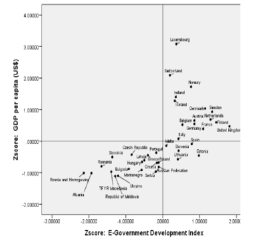
Figure 1. E-government adoption and economic
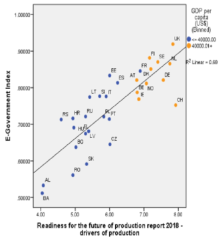
Figure 2. E-government adoption and readiness development for the future of production
Own calculations based on data
On Figure 1, the standardised variables reveal that countries situated in the bottom left quadrant have the analysed indicators under the EU average therefore in these cases, the e-government adoption needs seriously improved, and adequate policies are required. In the right-top are situated the developed economies, those that implemented e-government successfully. Figure 2 shows that countries with successful adoption of e-government are ready for the future of production since they possess advanced technologies. Figure 3 and Figure 4 highlight that the successful adoption of e-government can be realised only in developed information societies, the readiness (NRI) being the key determinant factor.
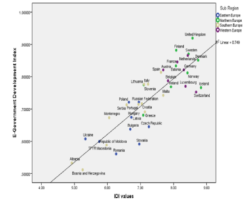
Figure 3. The development level of information
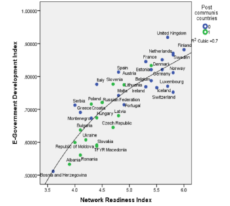
Figure 4. Readiness and e-government adoption
Society and e-government adoption
Own calculations based on data
- 322/323 -
Furthermore, the level of governments' procurement of advanced technology products is analysed. The WEF is considered an enabler in helping countries to generate innovation. The obtained results, as we can see on Figures 5, 6 and 7 reveals that the governments in developed economies (with high GDP marked by yellow), invest more in the procurement of advanced technology product. These countries are innovative, are able to manage the change and also achieved high NRI values. Thus in these economies, a favourable political and business environment was created which facilitates development Countries with high NRI score are the most innovative and most competitive ones as well.

Figure 5. Government and NRI
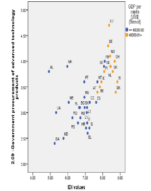
Figure 6. Government and information
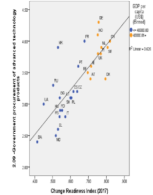
Figure 7. Government and society the ability to manage the change
Own calculations based on data
Figures 8, 9, 10 reveal that developed information societies (IDI), where nations able to use the benefits of ICT's (NRI), are also the most innovative ones and show readiness for the future of production. The readiness for the future of production is a new diagnostic tool to "help decision-makers assess the extent to which their country is ready and positioned to shape and benefit from the changing nature of production, catalyse public-private sector dialogue, and inform the development of joint actions and modern industrial strategies[16]." (WEF, 2018) Countries marked with yellow have the highest GDP.
- 323/324 -
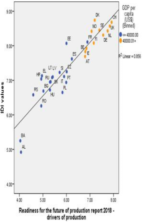
Figure 8. Information society and future of production
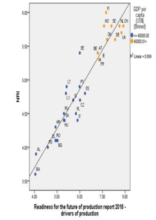
Figure 9. Readiness and future of production
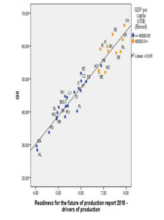
Figure 10. Inovativeness and future of production
Own calculations based on data
Figures 11, 12, 13 show the readiness for the future of production of the well developed knowledge-based economies (KEI), which with the successful adoption of e-government (eGDI) are able to favourable manage change (CRI). The Change readiness index (CRI) is calculated taking in consideration the enterprise, government, people and civil society capability.
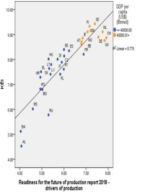
Figure 11. The knowledge-based and future of production
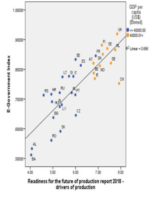
Figure 12. E-government adoption and future of production
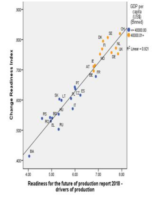
Figure 13. Change readiness Economy and future of production
Own calculations based on data
The most innovative, knowledge-based, information societies, which can use the benefits of ICTs', manage change and have an efficiently implemented e-government, are the most sustainable with low distance to the SdGs achievements (Figure 14).
- 324/325 -
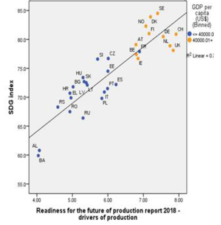
Figure 14. The future of production and achievements of SDGs
Own calculations based on data
4. Conclusions
The role of digitalization in economic growth is critical since it determines the economy's readiness for the future of production. Economic development needs innovativeness to offer competitiveness; it needs technological infrastructure to create an environment for the implementation of the latest technologies and requires knowledge for further development.
The level of economic development has a direct impact on successful e-government adoption. However, the calculated Spearman coefficients, noted by ρ, are greater than 0,8 which show that a strong relationship exists between the considered data and highlight that economic development measured in GDP is achieved if the countries are developed knowledge based economies (KEI) and information societies (IDI), if they have a high innovative performance (GII), invest more in advanced technologies, and are leaders in the achievement of sustainable development goals (SDGI).
The ability to manage change and build up a climate-ready future (CRI), the nation's or community's degree of preparation to participate in and benefit from information and communication technology developments (NRI) are key-success factors of development, and create a favourable environment for digitalization. The development of technology directly impacts the implementation of e-government. The results reveal that the successful implementation of e-government, the readiness for the transition toward digital government is a complex problem, many
- 325/326 -
key-determinant factors need to be considered and targeted strategies, appropriate policies have to be created.
Glenn Archer, an Australian researcher, considers that e-government is the first phase of digital government which translates into service transformation and innovation, the reason for which its level of implementation across economies is analysed. Through digitalization, the governments become more interconnected and assure the responsibility to safeguard their citizens.
Governments worldwide have to face the digital transformation, the transition toward digital government. The Digital Government Index (DGI) was published by OECD on 14 of October 2020 and presents the 2019's ranking of analysed economies. The rating was obtained through the evaluation of all six dimensions of OECD Digital Government Policy framework, namely: digital by design, data-driven public sector, government as a platform, open by default, user-driven, proactiveness. (OECD, 2020)
This paper highlights the role of readiness in the transition toward digital-government and indicates the leader countries. The obtained results highlight that the number of individuals interacting online with public authorities is determined by the level of development of information society, the level of readiness, the development level of KEI, the level of implementation of e-government.
The identification of the barriers and enablers in this process is an absolute requirement to design and implement adequate policies, which accelerate growth. ■
NOTES
[1] Selhofer, H., & Mayringer, H. (2001). Benchmarking the Information Society Development in European Countries. Communications - Strategies, 43(3).
[2] Zhiyuan, F. (2002). E-government in Digital Era: Concept, Practice and Development. International Journal of The Computer, The Internet and Management, 10(2), 1-22.
[3] Cuervo, V., & Menéndez, L. (2005). Inequalities in the Information Society: A Statistical Approach to the Digital Divide. First meeting of the society for the study of the economic iinequality (pp. 1-11). Palma de Mallorca, Spain: Universitat de les illes Balears. http://www.uib.es/congres/ecopub/ecineq/papers/257vincente-lopez.pdf.
[4] Andoh-Baidoo, F. K., & Lawrencia, A. (2011). Examining the Preparedness of an Emerging Economy towards E-Government Implementations: Swot Analysis. Southwest Decision Sciences Institute Conference,. Houston:: University of Louisiana at Lafayette. http://SWDSI_Proceedings/papers/papers/PA178.pdf.
[5] Soukup, J. (2013). Knowledge Economy and Innovation Indices: Their Concordance and Diversity. The 7th International Days of Statistics and Economics (pp. 1295-1303). Prague: Prague: University of Economics.
[6] Vintar, M., Decman, M., Kunstelj, M., & Bercic, B. (2003). Integral E-government Development Indicators. INetwork of Institutes and Schools of Public Administration (NISPA) Conference. Budapest.
[7] Szabo, Z. K., & Chiriac, L. (2016). Investigations Concerning E-Government Adoption in Transition Economies. Acta Oeconomica. http://doi.org/10.1556/032.2016.66.L3
[8] Damascene, T., & Andersson, A. (2019). The public value of E-Government - A literature review. Government Information Quarterly, 36(2), 167-178. doi: https://doi.org/10.1016/j.giq.2019.01.001
[9] OECD. (2020). Digital Government Index 2019 Results. OECD. doi: https://doi.org/10.1787/14e1c5e8-en-fr
[10] Irniger, A. (2017). Difference between Digitization, Digitalization and Digital Transformation. https://www.coresystems.net/blog/difference-between-digitization-digitalization-and-digital-transformation
[11] Chen, D. & Dahlman, C. (2006). http://documents.worddbank.org/. The knowledge-economy, the KAM methodology and World Bank operations:
[12] ITU. (2018). Measuring the Information Society Report: https://www.itu.int/en/ITUD/Statistics/Pages/publications/misr2018.aspx
[13] Baller, S., Dutta, S., & Lanvin, B. (2016). The Global Information and Technology Report. Retrieved from http://www3.weforum.org/: http://www3.weforum.org/docs/GITR2016/WEF_GITR_Full_Report.pdf
[14] NRI. (2019). Network Readiness Index: Towards a Future-Ready Society. (S. Dutta, & B. Lanvin, Ed.) Washington D.C., USA: Portulans Institute. Preluat pe October 2020, de pe https://networkreadinessindex.org/wp-content/uploads/2020/03/The-Network-Readiness-Index-2019-New-version-March-2020.pdf
[15] WEF. (2018). Readiness for the future of production. WEF. https://www.weforum.org/reports/readiness-for-the-future-of-production-report-2018
[16] UN. (2018). E-Government Development Database (UNeGovDD): https://publicadministration.un.org/egovkb/en-us/Data-Center
[17] https://publicadministration.un.org/egovkb/en-us/Data/Region-Information/id/4-Europe
[18] KPMG. (2018). The Change Readiness Index. http://www.kpmg.com/Global/en/IssuesAndInsights/
[19] Dutta, S., Lanvin, B., & Wunsch-Vincent, S. (2018). Global Innovation Index: https://www.wipo.int/edocs/pubdocs/en/wipo_pub_gii_2018.pdf
[20] Sachs, J., Schmidt-Traub, G., Kroll, C., Lafortune, G., & Fuller, G. (2018). SDG Index and Dashboards Report 2018. https://sdgindex.org/reports/sdg-index-and-dashboards-2018/
Lábjegyzetek:
[1] The Author is from University of Medicine, Pharmacy, Science&Technology "George Emil Palade", Târgu Mureş Faculty of Economy and Law, Romania.

